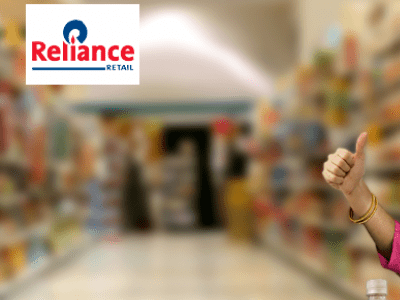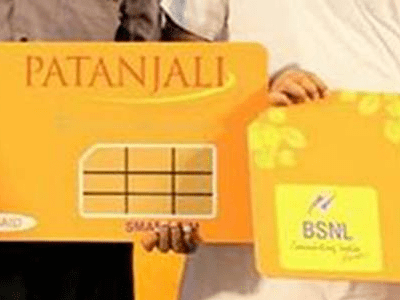e-Tailing, e-Commerce, online selling…these are some of the terms we use for the emerging business model wherein a company that has achieved a high degree of implementation of ICT tools to manage business operations, is able to sell its products and / or services by reaching out to buyers using Internet connectivity.
India is no different vis-à-vis some of the leading global economies in picking up this concept. Today we have reputed and sizeable e-commerce enterprises like Amazon, Flipkart, Jabong, Snapdeal etc. that are the result of this ‘parallel and disruptive commerce’ channel. In fact, even the founders of traditional businesses like Ratan Tata, Narayan Murthy and Azim Premji have made considerable monetary investments into e-enterprises. At the same time it has become a matter of concern for the traditional brick and mortar businesses, as they see a disruption in the making that is shaking even the strongest of such foundations. Why shouldn’t this happen? What all are these e-tailing enterprises offering you? They offer choice of brands, assurance, rebates, discounts, promotions, gifts, coupons, home delivery besides the actual product you are buying. This is not something you get from your traditional retailer. Even if you have purchased from the traditional retailer over decades or generations, you will rarely find all these at one place.
e-Commerce is still in a very nascent state in India, estimated to be less than 1% of the total retail market. CRISIL sizes the India e-commerce market at US$ 2.3 billion of the overall US$ 421 billion retail sector for the year 2013. But what is definitely there in good measure is market understanding, business acumen as well as openness towards higher utilisation of IT to better manage business processes, in order to bring about disruptive changes in the retail industry. Today, the organised retail sector uses IT mainly for inventory management and billing, that is, basic functions. I haven’t come across a store that tells me if a particular item is out of stock and when can I expect it to be available. I see sales people manually checking their records to tell me these ‘behind the veil’ facts of availability of size, colour, style etc.
Surprisingly, one big name that has been ‘missing’ from the e-commerce market in India is Reliance. The company is not on the scene publicly or, even at the level of ‘people with knowledge of the fact’. I personally feel the company is waiting for launch of Reliance Jio services throughout the country. Once it has its high speed network operational, it will leverage the same by offering a plethora of services apart from the plain data services. And one amongst these ‘value added’ services could be a retail platform.
While Reliance takes its time to decide on the e-commerce market opportunity, I see that some of the major PSUs of the country have also missed the bus. The three PSUs that I see with a strong potential to synergise their strategies and business operations and create a major online-offline e-tailing platform are India Post, Indian Railways and State Bank of India.
All the essential ingredients required to start and grow such an organisation are in place – Network, Connectivity and of course, Money. This is what these three PSUs can jointly bring to the table on a very large scale. While India Post can ensure delivery to any address in cities, towns and villages in every nook and corner of the country, Indian Railways has a logistics network throughout the country to ensure transportation and supply of ordered goods. State Bank of India could step in to fund the project, organise for payment gateway integration and even make consumer loans available to online buyers.
India has over 155,000 post offices where an average area serviced is 21.23 square kilometres reaching out to a population of 7,114 persons. It will be very challenging for any online seller to create such an extensive or direct ‘last mile’ distribution network throughout the country, giving equal weightage to cities, towns and villages.
Since online selling requires physical movement of goods and packages on a massive scale, the railway network can be used most effectively for this purpose. It will ensure timely and safe transit of goods ordered by the consumer.
Another benefit that can accrue from a large scale e-tailing platform of this scale is that it can serve to bridge the gap between the remote areas and regions of the country that produce traditional tribal and ethnic wares, handicrafts, textiles etc., but whose chief markets lie in the large metros, mini-metros or even overseas. Think of the possibility of making available a tribal dress made in Tripura for sale in Cochin, Goa or Mumbai, and even overseas in due course of time. Similarly, an apple grower in Sopore, Kashmir could sell the best quality apples to discerning customers in Delhi, Hyderabad or Chennai. Similarly, Tamil Nadu’s renowned Kanjeevaram sarees could be bought online by ladies residing in Punjab, Haryana, Rajasthan and so on. Thus, the large scale e-tailing platform could infuse new life and energy into some of our dying or moribund traditional manufacturing hubs that have a market but are not able to access modern supply chain, logistics and retail services.
In fact, such an initiative could integrate very well with the ‘Digital India’ and ‘Make in India’ drives recently launched by Prime Minister Modi. It is also a way to empower Indian consumers by making available to them good quality organic products of the right quality, at the right price, in their hands. At the same time, the country’s planners can look to open up substantial alternative revenue streams for Indian Post, Indian Railways and State Bank of India, beyond their traditional means of revenue generation. In summary, a “Win-Win-Win” situation and “Sabka Saath, Sabka Vikas”.












